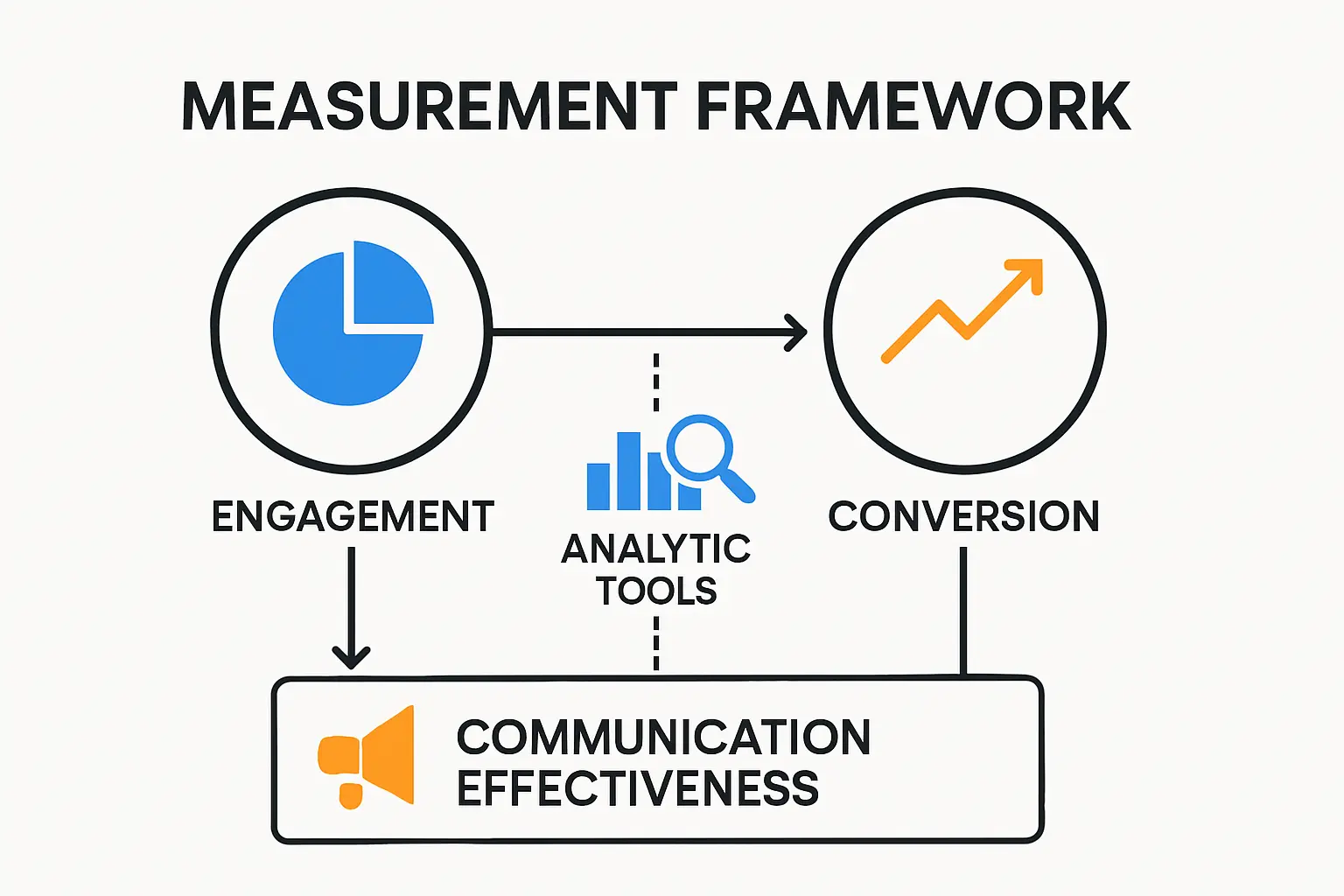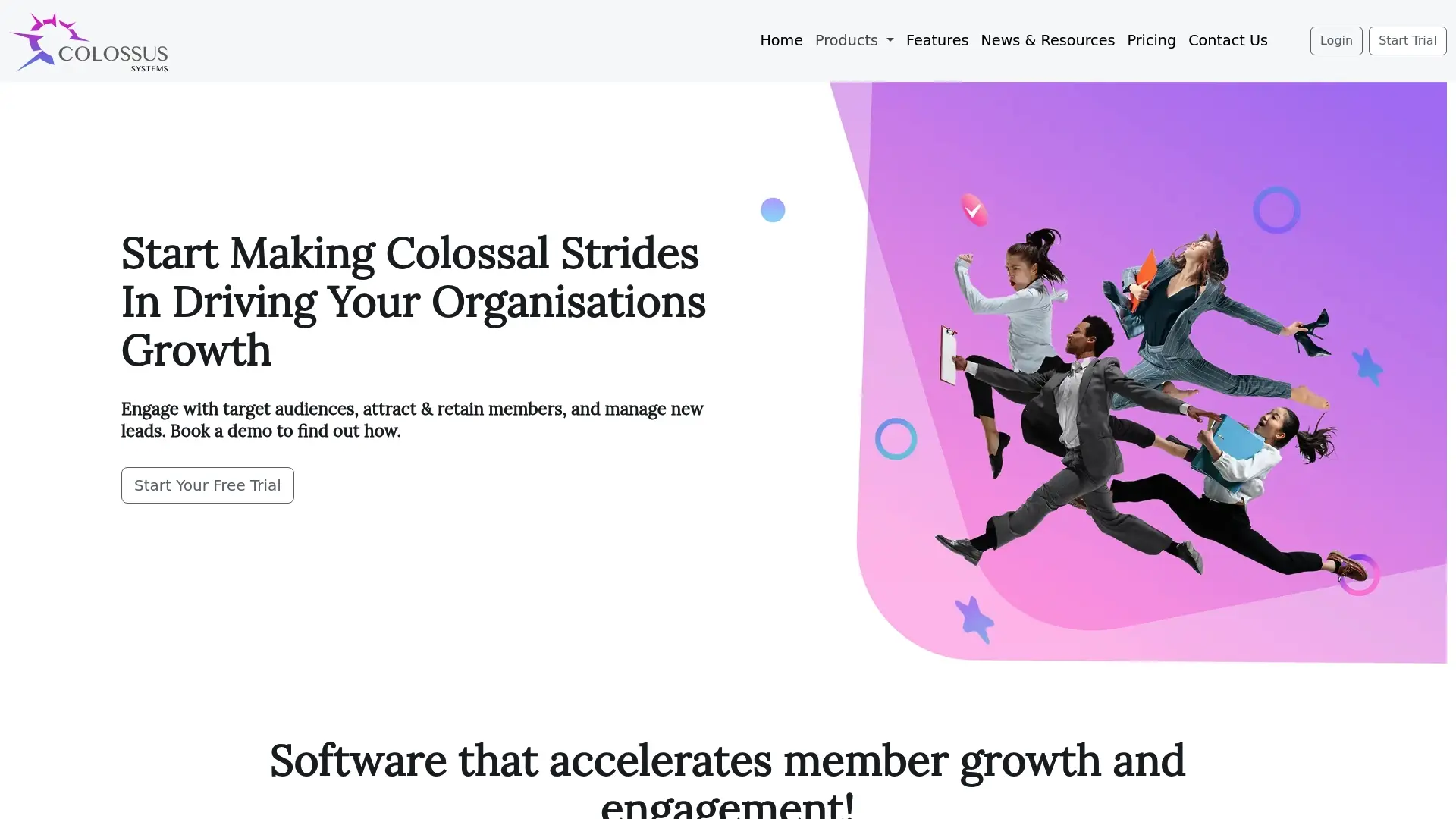Digital Communication Strategies for Member Organisations

Member organisations are under pressure to keep their communities informed and engaged in a world where digital messages are fired off in every direction. The surprising part is that personalised communication can increase member retention rates by over 20 percent, yet most organisations still rely on generic updates that go unread. Imagine what happens when you swap out mass emails for targeted, interactive digital experiences. Suddenly your members stop ignoring you and start responding—and that changes everything.
Table of Contents
- Understanding Digital Communication Needs
- Key Strategies For Member Engagement
- Tools And Best Practices For Success
- Measuring The Impact Of Your Strategy
Quick Summary
| Takeaway | Explanation |
|---|---|
| Understand your audience’s needs. | Segment your membership to recognise different communication preferences and customize your approach. |
| Implement measurement frameworks. | Track engagement levels and content effectiveness to refine communication strategies continuously. |
| Emphasise personalised communication. | Create targeted messages that resonate with individual members, enhancing engagement and loyalty. |
| Utilise the right communication tools. | Choose scalable, user-friendly platforms that enable effective two-way communication with members. |
| Design interactive digital experiences. | Ensure your digital platforms are intuitive and facilitate seamless member interactions and community building. |
Understanding Digital Communication Needs
Member organisations today face unprecedented challenges in communicating effectively across diverse digital platforms. The evolution of communication technologies demands a strategic approach that goes beyond traditional methods.
Identifying Core Communication Requirements
Digital communication strategies are no longer optional but essential for organisations seeking to maintain relevance and engagement. Research from the Academy of Digital Communication highlights that successful digital communication requires a multifaceted approach addressing several critical dimensions.
Organisations must first understand their unique communication ecosystem. This involves mapping out current communication channels, audience demographics, and organisational objectives. Key considerations include:
- Audience Segmentation: Recognising different member groups and their preferred communication methods
- Technology Integration: Selecting platforms that enable seamless interaction
- Content Relevance: Creating meaningful communications that resonate with members
Strategic Communication Channel Development
A comprehensive study on nonprofit digital engagement reveals that effective digital communication transcends mere information distribution. Successful strategies focus on three primary functions: information dissemination, community building, and action mobilization.
Nonprofit and membership organisations must develop sophisticated communication approaches that:
- Enable real time information sharing
- Create interactive community spaces
- Facilitate member participation and feedback
- Support organisational transparency and trust
This requires a nuanced understanding of digital communication tools and their strategic implementation. Digital platforms are not just transmission channels but complex ecosystems of member interaction and organizational engagement.
Measuring Communication Effectiveness
Implementing digital communication strategies necessitates robust measurement frameworks. Organisations must move beyond vanity metrics to understand deeper engagement indicators. This involves tracking:
- Member interaction rates
- Content engagement levels
- Communication channel preferences
- Conversion and retention metrics
By developing data driven communication strategies, member organisations can create more targeted, responsive, and meaningful digital interactions that truly serve their community’s needs. The goal is not just to communicate but to build genuine connections that strengthen organisational cohesion and member loyalty.
Understanding digital communication needs is an ongoing process of adaptation, learning, and strategic refinement. Organisations must remain agile, continuously reassessing their communication approaches to meet evolving member expectations and technological landscapes.
Key Strategies for Member Engagement
Member engagement represents the cornerstone of successful membership organisations, requiring sophisticated digital communication approaches that create meaningful connections and sustained participation.
Personalised Communication Frameworks
The Nonprofit Leadership Alliance emphasises that organisations reporting increased membership consistently implement targeted communication strategies. Personalisation goes beyond addressing members by name - it involves understanding individual member needs, preferences, and professional development goals.
Effective personalisation strategies include:
- Segmented Content Delivery: Creating tailored communications based on member demographics
- Adaptive Learning Pathways: Offering professional credentials and learning opportunities
- Contextual Engagement: Developing communication that resonates with specific member interests
Digital Platform Optimization
Research from the American Society of Association Executives highlights the critical importance of maintaining brand consistency across digital channels. Visual uniformity and professional presentation significantly impact member perception and engagement levels.
Key optimization principles include:
- Developing comprehensive brand guidelines
- Creating reusable digital communication templates
- Ensuring aesthetic consistency across platforms
Organisations can explore advanced engagement techniques to enhance their digital communication strategies.
Interactive Member Experience Design
Fifty and Fifty emphasises the necessity of creating user-centric digital experiences. Modern membership platforms must provide comprehensive, intuitive interfaces that enable seamless interactions.
Critical components of interactive member experiences include:
- Mobile responsive website design
- Easy membership management tools
- Streamlined event registration processes
- Direct communication channels with organisational staff
- Community networking opportunities
Successful member engagement requires continuous adaptation. Digital communication strategies must evolve alongside technological advancements and changing member expectations. By prioritising personalisation, platform optimization, and interactive design, organisations can create compelling digital environments that foster long term member loyalty and participation.

Tools and Best Practices for Success
Digital communication success for member organisations requires strategic selection of tools and implementation of proven best practices that enhance engagement and organisational effectiveness.
Communication Technology Selection
Choosing the right digital communication tools is fundamental to creating meaningful member interactions. Chambers of Commerce research highlights the importance of selecting platforms that facilitate comprehensive two-way communication.
Critical considerations for technology selection include:
To help organisations choose the most suitable digital communication tools, the table below compares key platform selection criteria and their importance for member engagement.
| Selection Criterion | Description | Importance for Engagement |
|---|---|---|
| Scalability | Ability for the platform to accommodate organisational growth | High |
| Integration Capabilities | Offers seamless connection between communication channels | High |
| User Experience | Provides intuitive and accessible interfaces for all members | High |
| Two-way Communication | Enables both sending and receiving feedback and messages | Essential |
| Data Analytics | Supports collection and analysis of engagement, satisfaction, and retention | Important |
- Scalability: Platforms that grow with organisational needs
- Integration Capabilities: Seamless connection between different communication channels
- User Experience: Intuitive interfaces that encourage member participation
Strategic Content Management
Effective digital communication transcends mere tool selection. Organisations must develop sophisticated content strategies that deliver value and foster member engagement. This involves:
- Creating targeted, relevant content
- Developing consistent messaging across platforms
- Implementing data-driven content personalization
Learn more about advanced engagement techniques that can transform your digital communication approach.
Performance Measurement and Optimization
Successful digital communication requires continuous monitoring and strategic refinement. Organisations should implement comprehensive analytics frameworks that track:
- Member interaction metrics
- Content engagement rates
- Communication channel effectiveness
- Member satisfaction indicators
By adopting a holistic approach to digital communication tools and practices, member organisations can create dynamic, responsive communication ecosystems. This approach enables deeper member connections, more effective information sharing, and ultimately, stronger organisational community engagement.
The landscape of digital communication is continuously evolving. Organisations must remain adaptable, regularly reassessing their tools and strategies to meet changing member expectations and technological advancements. Successful implementation requires a commitment to ongoing learning, experimentation, and strategic innovation.
Measuring the Impact of Your Strategy
Measuring the impact of digital communication strategies is crucial for membership organisations to understand their effectiveness, optimize performance, and demonstrate value to stakeholders.
Defining Comprehensive Measurement Frameworks
Digital.gov’s Federal Communicators Network emphasizes the importance of developing robust measurement approaches that go beyond surface level metrics. Effective impact assessment requires a multidimensional approach that captures both quantitative and qualitative insights.
Key measurement dimensions include:
Below is a summary table organising the main measurement metrics and their focus areas for assessing digital communication impact in member organisations.
| Measurement Metric | Focus Area | Example Indicator |
|---|---|---|
| Engagement Metrics | Interaction & participation | Content consumption |
| Conversion Indicators | Growth & retention | Renewal rates |
| Communication Effectiveness | Message reach & comprehension | Email open/click rates |
| Member Satisfaction | Community feedback | Survey results |
| Channel Preferences | Platform optimisation | Preferred channel usage |

- Engagement Metrics: Tracking interaction rates, content consumption, and member participation
- Conversion Indicators: Monitoring membership growth, retention, and renewal rates
- Communication Effectiveness: Evaluating message reach and comprehension
Advanced Analytics and Performance Tracking
Research examining digital communication strategies highlights the significance of sophisticated analytics in understanding organisational communication performance. Modern measurement approaches must incorporate:
- Real time data collection
- Comprehensive performance dashboards
- Predictive analytics capabilities
Discover advanced engagement measurement techniques to transform your communication strategy.
Strategic Insights and Continuous Improvement
Humanitarian sector research underscores the importance of using measurement insights for strategic refinement. Successful organisations view impact measurement as an ongoing process of learning and adaptation.
Critical components of a strategic measurement approach include:
- Regular performance reviews
- Comparative benchmarking
- Iterative strategy development
- Stakeholder feedback integration
Measuring digital communication impact is not about collecting data but transforming insights into actionable strategies. Organisations must develop a culture of continuous learning, where measurement drives meaningful improvements in member engagement and communication effectiveness.
The most successful membership organisations view measurement as a dynamic, iterative process. By embracing sophisticated analytics, maintaining flexibility, and commitment to ongoing improvement, organisations can create communication strategies that truly resonate with their members and drive meaningful engagement.
Frequently Asked Questions
What are the key components of effective digital communication for member organisations?
Effective digital communication for member organisations involves audience segmentation, technology integration, and content relevance. It’s essential to tailor communication strategies to meet the diverse needs of members across various platforms.
How can organisations measure the effectiveness of their digital communication strategies?
Organisations can measure effectiveness by tracking key metrics such as member interaction rates, content engagement levels, communication channel preferences, and conversion metrics. Implementing a comprehensive measurement framework ensures ongoing assessment and improvement.
What role does personalised communication play in member engagement?
Personalised communication significantly enhances member engagement. By understanding individual member needs and preferences, organisations can create tailored messages that resonate, fostering loyalty and encouraging participation.
What are some best practices for selecting communication technology in member organisations?
When selecting communication technology, organisations should consider scalability, integration capabilities, user experience, two-way communication features, and data analytics support. These factors contribute to effective member engagement and communication.
Empower Your Member Organisation with Personalised Digital Engagement
Struggling to keep your members engaged while juggling multiple communication tools? This article showed how many organisations fall behind by using generic updates that disconnect from member needs, leaving them frustrated and increasing the risk of member churn. As highlighted throughout, tailored communication frameworks, real-time feedback, and interactive portals are crucial for fostering genuine connections and driving retention.

Why wait to transform your strategy? At Colossus Systems, you can centralise all aspects of member management, event planning, virtual learning, and marketing in one flexible platform. Benefit from personalised email campaigns, targeted analytics, online payment integration, and branded portals designed specifically for membership organisations. See how you can deliver value, build loyalty and achieve measurable growth.
Discover how your organisation can deliver stronger engagement and seamless communication here. Start creating experiences your members will remember today.
Recommended
- How to Boost Member Engagement and Why use Engagement Software|CS
- Membership Software for Societies and Clubs | Colossus Systems
- [The Benefits of Integrating Job Boards into Membership Organisations